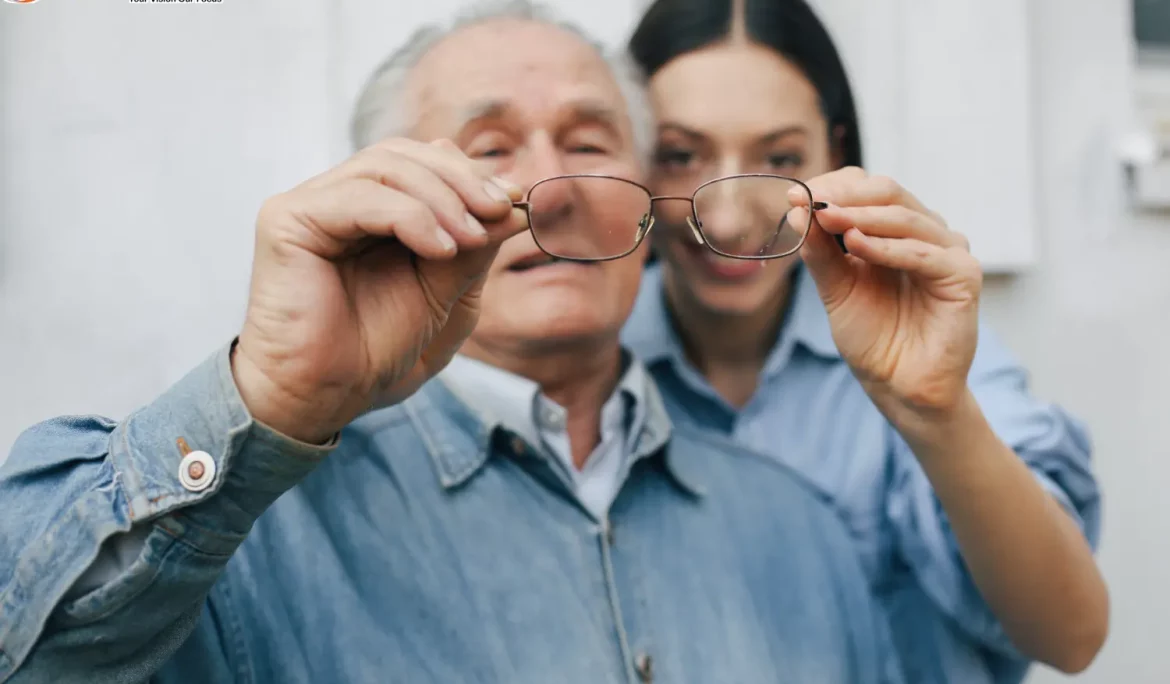Day by day we see lots of changes in our body and as we age our eye’s vision changes. A few common changes that old age people struggle with in their eyes are nearsightedness, farsightedness, difficulty distinguishing colours and others. Although these changes are a natural part of aging what is important is to understand these changes and know how to adapt
When old age people visit Eye Care Plus we educate them about vision changes due to old age. Being a successful optometrist Calgary AB we educate them on how to adapt to these changes by improving the quality of their life. Here in this article, we have written about common vision changes that occur with age and offer practical tips on adapting to these changes to ensure optimal eye health and functionality.

1. Understanding Common Age-Related Vision Changes
When individuals pass 40 years of age they begin facing common changes in their visions and one is Presbyopia. Experts suggest that several changes in our eyes can affect vision clarity and overall eye health since we pass 40 of our age.
If struggling with Presbyopia then it will be strenuous to focus on close objects and then you may need reading glasses or bifocals. Another common condition that is hellish is dry eyes. It is categorized as a serious eye condition if it isn’t taken care of for long. Due to old age eyes may not produce enough tears leading to discomfort, itchiness, and sometimes blurry vision.
2. Cataracts: Clouding Of The Lens
Cataract is a serious eye problem that occurs in old age. It should be prevented as it may lead to vision loss if ignored for a long time. In this clouding over the eye’s natural lens causes issues to see clearly.
This cloudiness can cause blurred vision, difficulty seeing in low light, and increased sensitivity to glare. Cloudiness over the eye lens develops slowly over time. This disease is curable as doctors treat it with surgery to replace the clouded lens with an artificial one. Regular eye exams are crucial to detect cataracts in the first stage.
3. Glaucoma: Increased Pressure in the Eye
Glaucoma is categorized as a severe eye condition that occurs usually in old age. It can damage the optic nerve of the patient causing permanent blindness. This condition occurs often due to increased pressure within the eye.
It is a leading cause of irreversible blindness worldwide. It can develop gradually since individuals pass 50 of their age. Patients usually do not come to know that they are suffering from Glaucoma until significant vision loss occurs or visit for diagnosis. Since you entered you’re old we recommend going for regular eye exams for early detection and treatment of serious eye conditions
4. Age-Related Macular Degeneration (AMD)
Nowadays age-related macular degeneration (AMD) is a leading cause of vision loss among older people. It occurs when the patient’s central part of the retina called the Macula gets affected. It is a sensitive part responsible for the sharp and central vision required for reading and driving.
This common vision change disease progresses slowly leading to blurred vision and dark spots in the central vision causing difficulty in recognizing faces. While experts share that there is no cure for AMD, early detection and lifestyle changes can help slow its progression.
Conclusion
Optometrist Calgary AB shares that aging brings inevitable changes to our vision. But old people can overcome these serious conditions by understanding these changes and taking proactive steps to maintain eye health.
















